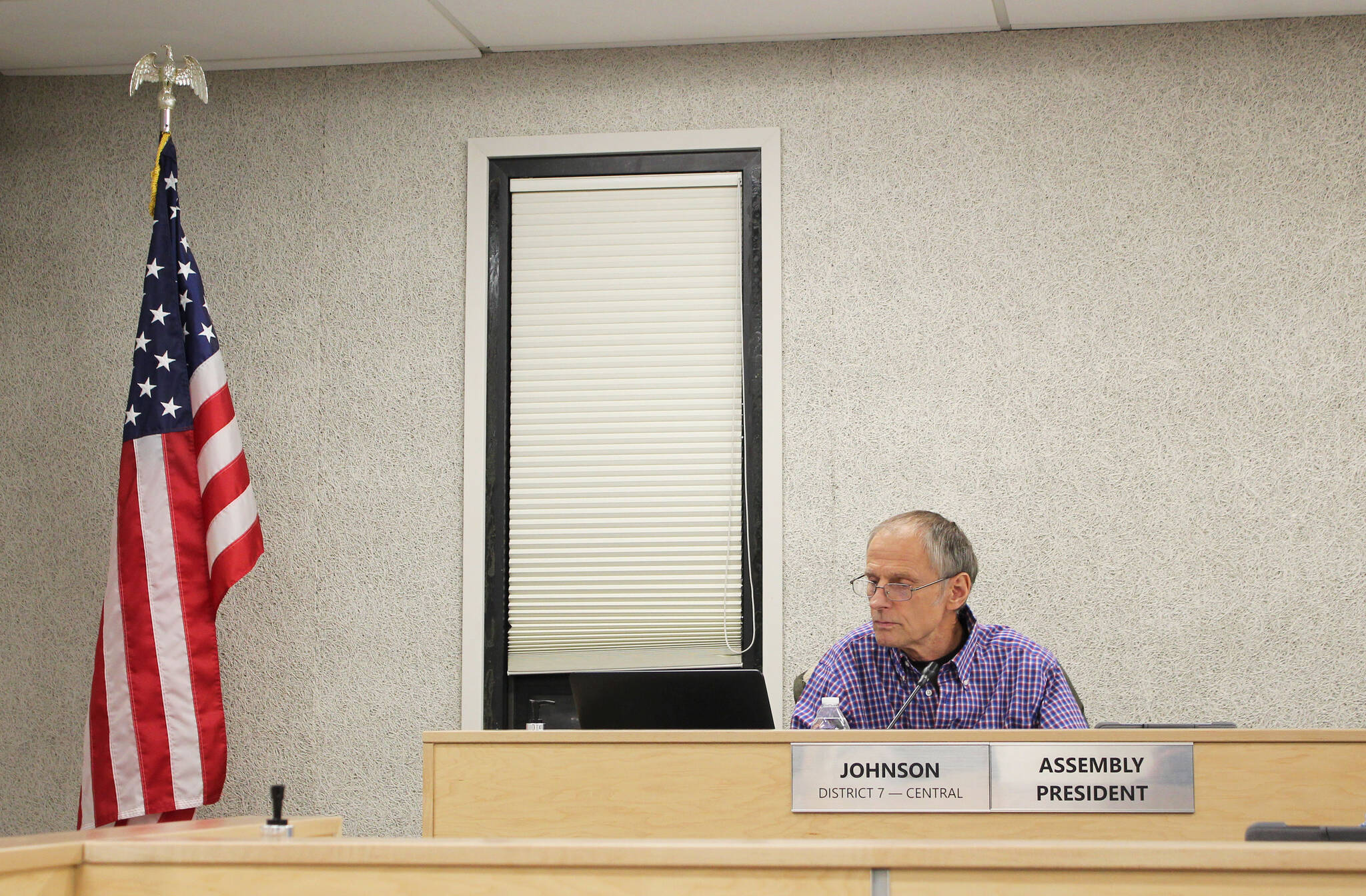The Kenai Peninsula Borough Assembly voted Tuesday to further table legislation that would overhaul the sections of borough code that address the regulation of material sites — sometimes referred to as gravel pits. The move was made to allow for the creation of a committee dedicated to refining legislation addressing the issue.
Material sites, and particularly gravel pits, are historically a source of contention between operators who say they provide jobs and allow landowners to harvest resources, and neighboring landowners who object to the aesthetics, the resulting traffic and the effects on property value.
The legislation currently before the assembly marks the resurgence of a debate that effectively ended in January 2020 after years of community and administrative efforts to address the issue. The body similarly voted to table the legislation during its Jan. 18 meeting, when a public hearing on the ordinance was held and nearly two hours of testimony were provided.
Kenai Peninsula Borough Mayor Charlie Pierce told the assembly during a Tuesday meeting of the assembly’s Policies and Procedures Committee that he brought the issue back before the assembly because of the amount of work that was put into finding a solution last time and the sense of “disagreement” on how the debate ended.
The borough assembly created a Material Site Work Group in January 2018 and had a stated goal of evaluating existing borough codes to ensure an “appropriate balance” between affordable development and quality of life for residents. That’s according to a Nov. 17, 2021, memo from Kenai Peninsula Borough Planner Bryan Taylor to members of the Kenai Peninsula Borough Planning Commission.
The work group, Taylor wrote, forwarded an ordinance to the Kenai Peninsula Borough Planning Commission for review in April 2019 and the commission ultimately recommended approval in November of that year. The ordinance failed after being voted down by the borough assembly in December 2019.
The resolution put before the assembly last month reproduces, “word for word,” the ordinance defeated by the assembly in 2019. That’s per a Nov. 23, 2021, memo from Kenai Peninsula Borough Planning Director Melanie Aeschliman to the assembly.
Kenai Peninsula Borough Assembly Vice President Brent Johnson cited continuous “strife” caused by feuds over material site permitting as well as the use of borough resources to address planning commission appeals in explaining why he signed on to the legislation as a co-sponsor.
Creating a committee specifically for the issue of material site permitting, Johnson said, will give the assembly designated time and space to debate and amend the legislation instead of doing so during a regular assembly meeting, and will give the body more time to hear from stakeholders. The committee will meet before the assembly’s regularly scheduled meetings and will be chaired by assembly member Lane Chesley, who represents Homer.
“That way, we can put the various pieces of this puzzle together, rather than doing it on the fly in front of everybody when we can’t get the time we need to do it,” Johnson said.
A sectional analysis of the ordinance prepared in 2019 outlines changes proposed by the ordinance that range from adding definitions of phrases like “haul route” to adopting new standards for material sites that address protections for fish and wildlife, to limiting the space between an operation and the edge of a property to 100 feet.
Those opposed to the ordinance say more input is needed from industry stakeholders and have proposed that the assembly start from scratch in working to craft new regulations, noting that the ordinance was defeated the last time it went before the assembly.
“Several of our members have asked the Association to write a letter as a plea of communication and education, asking members of the assembly to contact them before any further amendments are considered,” says one letter from the Kenai Peninsula Aggregate and Contractors Association. “Most of our members and the public are concerned about what damage to the industry, economy, property rights, and equal protection any further amendments will do without industry input.”
Sterling resident Ken Killian similarly proposed during the assembly’s Jan. 18 meeting that the assembly start over with the process and advocated for more rigid guidelines as they relate to material sites.
“We are asking our elected officials in this room to go back to the drawing board, make a radical change in where these pits can be located (and) create true standards, not squishy conditions that have allowed business interest to move in our neighborhoods and make them an undesirable place to live,” Killian said.
Also up for consideration under the legislation before the assembly is what role the borough planning commission should have in the conditional land use permitting process. Whether the commission should continue to have the discretion to deny or approve an application and what the scope of that discretion is are among the questions posed by a memo prepared by the borough’s legal team.
The authority of the borough planning commission to approve or reject conditional land use permits was affirmed by the Alaska Supreme Court in December 2021, when it ruled that the Kenai Peninsula Borough Planning Commission had the authority to deny a permit to Emmitt Trimble, the owner of Beachcomber LLC in Anchor Point. Aeschliman said Wednesday that the case is scheduled for a planning commission decision on Feb. 14.
Tuesday’s full meeting of the Kenai Peninsula Borough Assembly can be viewed on the borough’s website.
Reach reporter Ashlyn O’Hara at ashlyn.ohara@peninsulaclarion.com.

